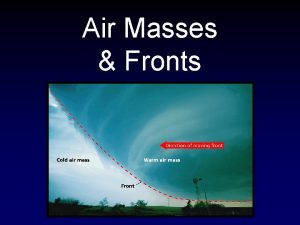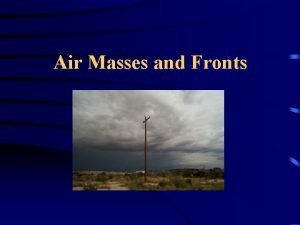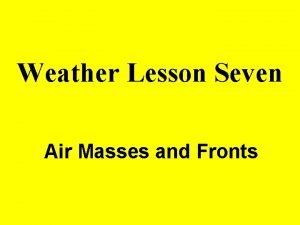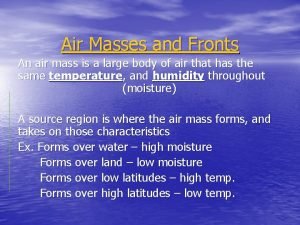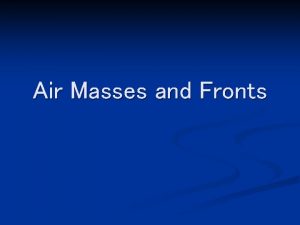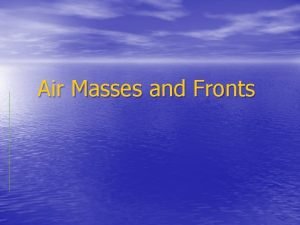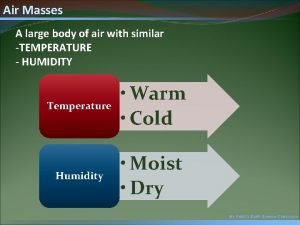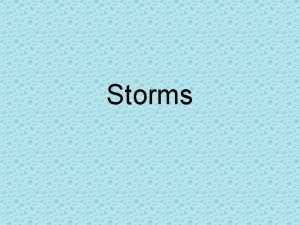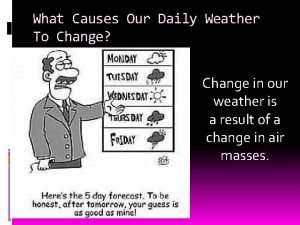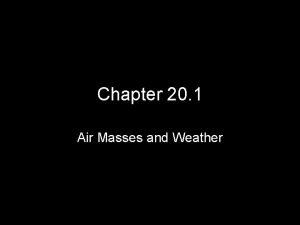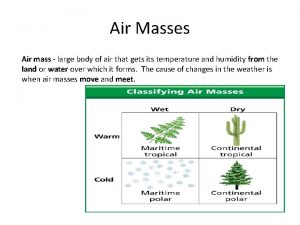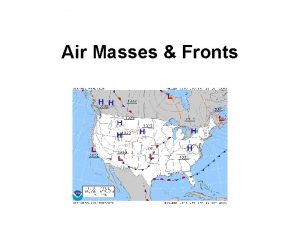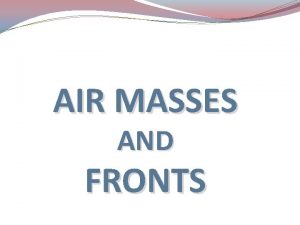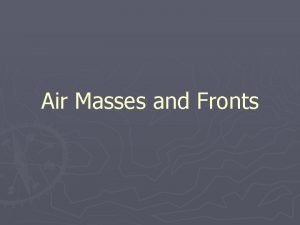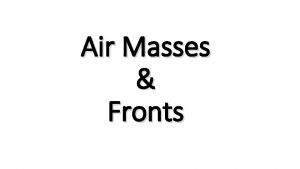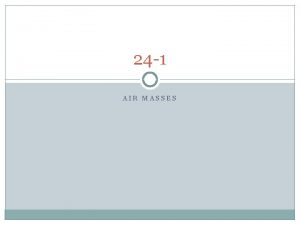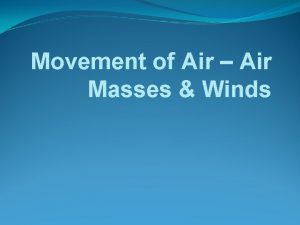Air Masses An air mass Is a large















- Slides: 15

Air Masses

An air mass Is a large body of air where temperature and moisture content are similar throughout.

We classify (organize) air masses by their temperature and moisture content.

Cold Air Masses In American most of the cold winter weather comes from three polar air masses that form over Canada.

These three masses are Air mass Forms Winter weather Summer weather 1) Continental polar (c. P) 2) Maritime polar (m. P) Over northern Extremely cold Cool, dry Canada Over North Rain and snow Cool, foggy Pacific Ocean 3) Maritime polar (m. P) Over North Cool, cloudy Atlantic Ocean weather with precipitation Cool weather and fog

There are four warm air masses influencing the United States Air mass Where formed Winter weather Summer weather 1) Two Maritime tropical (m. T) Gulf of Mexico and Atlantic Ocean Mild, cloudy weather Hot and humid weather including thunderstorms 2) Maritime tropical (m. T) Pacific Ocean Mild, warm weather Mild temperatures, moisture 3) Continental tropical (c. T) Mexico Clear, dry weather

Fill out the graphic organizer Maritime define Polar - define Tropicaldefine Continental define

How these interact produces fronts the basics of our weather. A front is the area where two air masses meet. There are four types: a) Warm b) Cold c) Occluded d) stationary

Warm front Formed: Warm air moves over cold air and gradually replaces the cold. Weather: drizzly rain then warm, clear weather

Cold front Forms: cold air moves under warm air and pushes the air up. Weather: thunderstorms and rain followed by cooler weather

Occluded front Formed: warm air mass caught between two cold air masses. The warm air mass is pushed up and then the cold air masses meet and the warmer of the two is pushed up. Weather: cold, rainy and snowy

Stationary Front Forms: when a cold air mass and a warm air mass meet but there isn’t enough force for them to move so they don’t mix Weather: many days of rainy weather

Complete the foldable Fold paper “hot dog” style then divide and label as shown

On the inside

The back
 Two cold air masses converge on a warm air mass
Two cold air masses converge on a warm air mass Maritime polar
Maritime polar Air masses & frontswhat is an air mass?
Air masses & frontswhat is an air mass? What are the seven
What are the seven Air masses & frontswhat is an air mass?
Air masses & frontswhat is an air mass? Air masses & frontswhat is an air mass?
Air masses & frontswhat is an air mass? Air masses & frontswhat is an air mass?
Air masses & frontswhat is an air mass? Large body of air
Large body of air Cold air mass overtakes warm air mass
Cold air mass overtakes warm air mass Polar air masses have low air pressure true or false
Polar air masses have low air pressure true or false Circulation of air masses
Circulation of air masses North american air masses
North american air masses Source regions for air masses
Source regions for air masses Diagram of warm front
Diagram of warm front Importance of air masses
Importance of air masses Types of air masses
Types of air masses

